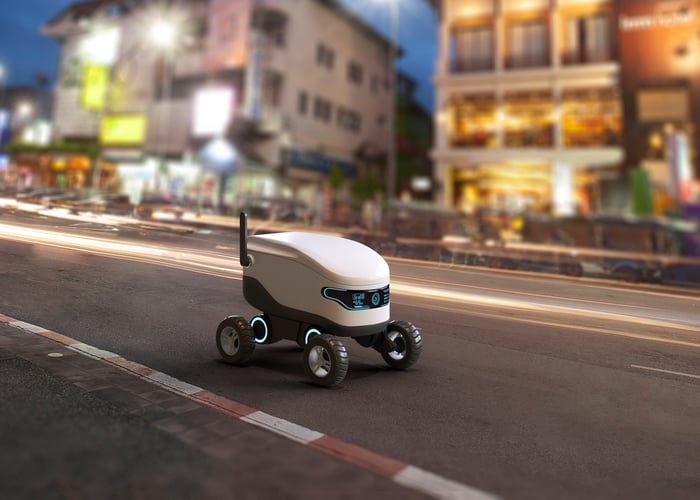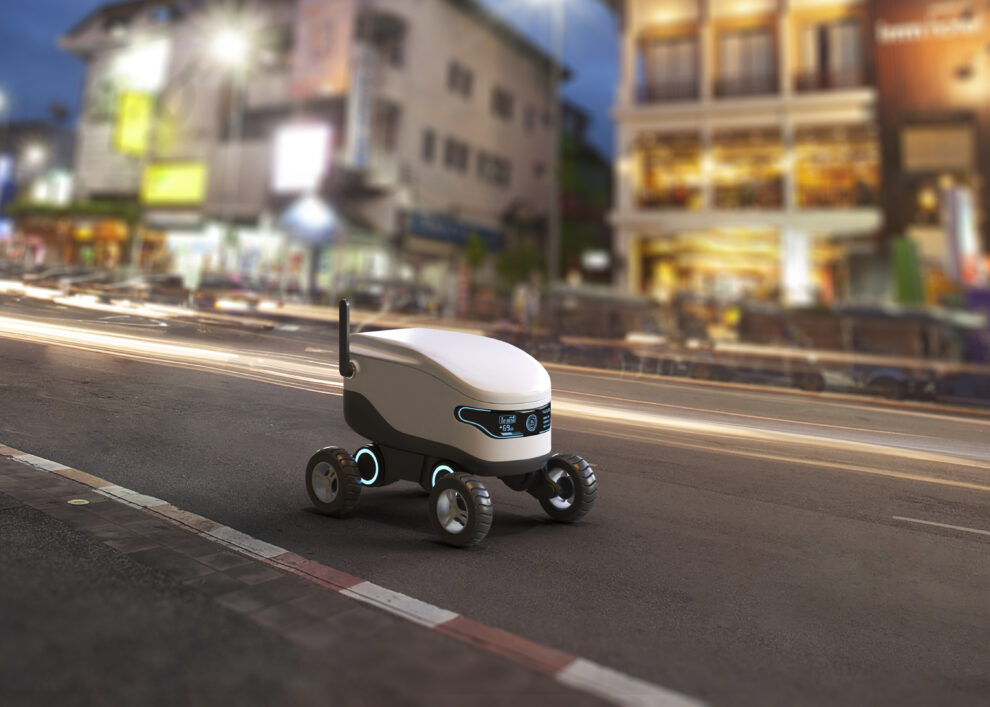Serve Robotics stock jumped 225% when Nvidia’s stake in the company was revealed, but it plummeted afterward.
Nvidia (NVDA -0.01%) is the leading supplier of graphics processing units (GPUs) for data centers, which are used to develop advanced artificial intelligence (AI) models. The company consistently grew its quarterly revenue by triple-digit percentages over the past year, propelling its market capitalization to $3.2 trillion.
Now, it’s spreading some of its wealth by investing in smaller companies in the AI industry. It bought shares in a handful of companies at the end of 2023, including top performers Arm Holdings and SoundHound AI.
According to a July 18 regulatory filing, Nvidia also converted a promissory note to acquire 1 million shares of Serve Robotics (SERV -7.66%), which develops autonomous last-mile delivery solutions. It invested a total of $12 million into Serve since 2022, and currently owns 3.7 million shares, which represents around 8% of the company.
Serve stock soared 225% when investors learned of Nvidia’s latest move, but since plummeted 31% from that peak. It’s a tiny company with a market cap of just $400 million, and it could deliver plenty of upside if it executes on its business mode. So, should investors follow Nvidia’s lead and buy the stock?

Image source: Getty Images.
Delivery robots: The future of last-mile logistics?
In an August presentation to investors, Serve Robotics posed a thoughtful question: Why do we use two-ton cars to deliver two-pound burritos? It goes on to highlight the hazards posed by cars, to both pedestrians and the environment.
Serve believes robots and drones are the answer instead, because the falling cost of AI hardware and software, combined with higher wages and labor shortages, will result in attractive economics for autonomous delivery solutions. In fact, the company believes the market for robotic and drone delivery could top $450 billion by 2030.
Serve designed robots with Level 4 autonomy, which means they can drive on the sidewalk using AI with no human intervention. The company deployed 100 of them in Los Angeles under a pilot program in 2022, and completed over 50,000 deliveries for 300 different restaurants. The company says the robots had a failure rate of 0.5 per 1,000 orders, which translates to a success rate in excess of 99.9%, making them 10 times more reliable than human drivers.
Serve is now working on deploying 2,000 robots by the end of 2025 on Uber‘s meal-delivery platform, Uber Eats. It will expand within Los Angeles and enter new markets including Dallas and San Diego. The new robots will be manufactured exclusively by Magna International, an $11.8 billion components supplier to the automotive industry.
Under the terms of their deal, Magna is also paying Serve a licensing fee to use some of its software to create other autonomous robots outside of the food delivery industry, providing the start-up with another revenue stream.
Serve isn’t generating much revenue, but it’s growing fast
Serve generated just $207,545 in total revenue during 2023, but that was nearly double what it generated in 2022.
Its growth is going to accelerate substantially in 2024 because it has already generated over $1.415 million in revenue during the first two quarters. That included $1.15 million from the Magna licensing deal and $265,086 from its food delivery business.
However, the company said its software services deal with Magna was largely completed during the second quarter, meaning it doesn’t expect any further revenue from the partnership in the upcoming third quarter. That could result in a significant drop in Serve’s total revenue in the second half of 2024, and into 2025.
Even though the company is growing its core revenue from actual deliveries, it’s not enough to offset its alarming cash burn. The company lost $18.1 million in the first six months of 2024, after spending an enormous amount, including $12.4 million on research and development alone. That means Serve is on track to exceed its 2023 loss of $20.7 million, potentially by a very wide margin.
The stock isn’t cheap, so investors should be cautious
Serve ended the second quarter of 2024 with $28.7 million in cash on hand. Most of that came from its $40 million equity raise in April, when the company was elevated to a listing on the Nasdaq stock exchange from the over-the-counter market (which is where many high-risk small-cap stocks trade). However, its second-quarter cash balance doesn’t include a further $20 million the company raised in August.
Considering Serve’s $18.1 million loss in the first half of 2024, a cash balance of $48 million probably won’t last even two years unless the company dramatically cuts costs. On the plus side, Uber and Nvidia are two of Serve’s largest shareholders, so it’s possible they will step in to fund the start-up while it continues to scale up.
The stock’s valuation is another reason investors should be cautious. The company is likely to generate around $1.7 million in total revenue this year — based on the $1.15 million it received from Magna, plus more than $530,000 in delivery revenue if we extrapolate its first-half result. Therefore, based on its current market capitalization of $400 million, its stock trades at a daunting forward price-to-sales ratio (P/S) of 226.
That makes Serve much more expensive than Nvidia, which trades at a forward P/S of 25.9 as of this writing. Considering Nvidia is on track to deliver $125.5 billion in revenue in fiscal 2025 (ending Jan. 31, 2025) and is highly profitable, it makes no sense for Serve stock to trade at such a lofty premium.
Nvidia’s stake is definitely a positive sign for the start-up. But remember, the chipmaker is a $3.2 trillion giant, so it can afford to lose the $12 million it has poured into Serve so far. At the current valuation, I don’t think you should be participating.





